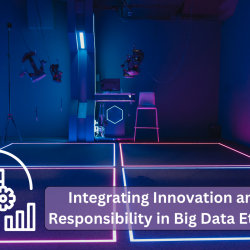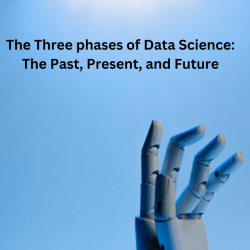The Impact of AI (Artificial Intelligence) on English Language Learning


Introduction to AI (Artificial Intelligence)
Welcome to the world of AI (Artificial Intelligence)! You may have heard this term before, but do you really know what it means? Well, let’s start by defining it. AI is a branch of computer science that deals with creating intelligent machines that can think and learn like humans. With the advancements in technology, AI has become a prominent tool in various industries, including education.
In recent years, the use of AI in education has been on the rise. From personalized learning programs to virtual tutors, AI is revolutionizing the way we teach and learn. And one area where its impact is greatly felt is in English Language Learning (ELL). With an estimated 1.5 billion people learning English worldwide, AI has the potential to make a significant difference in language instruction.
So why exactly is AI being incorporated into English language learning? The answer lies in its numerous advantages. First and foremost, AI offers personalized learning experiences tailored to individual needs and abilities. Through data analysis and machine learning algorithms, AI can identify a learner’s strengths and weaknesses and provide targeted lessons to improve their language skills.
Definition of Artificial Intelligence and Language Learning
Firstly, let’s define Artificial Intelligence. It refers to the simulation of human intelligence processes by machines or computer systems. This means that AI can perform tasks that typically require human intelligence, such as problem solving and decision making. With advancements in technology, AI has become more sophisticated and capable of performing complex tasks with great accuracy.
The impact of AI on language learning is undeniable. Traditional language learning methods often lack personalization and fail to cater to individual needs and learning styles. However, with AI, language learners can now access personalized learning experiences based on their strengths, weaknesses, and interests.
Moreover, AI has enabled the development of intelligent tutoring systems that provide real time feedback to learners as they practice speaking or writing in English. This instant feedback helps learners identify their mistakes and correct them promptly. Additionally, AI-powered tutors can adapt to each learner’s pace and adjust the level of difficulty accordingly.
Advantages of Using Artificial Intelligence in English Language Learning Subsection
As technology continues to advance, traditional one size fits all teaching methods are becoming outdated. Every individual has their own pace and way of learning. With the help of AI, English language learners can create a customized learning path that suits their needs and goals.
Personalized learning experience is achieved through AI algorithms that analyze student’s strengths and weaknesses in different areas of language, such as grammar, vocabulary, and pronunciation. This allows students to focus on specific areas that need improvement rather than following a generic curriculum. With AI, you can work at your own pace without feeling overwhelmed or bored.
Moreover, AI technology provides instant feedback and corrections which further enhances the personalized learning experience. Traditional classroom setting often lacks individual attention and it can take days or even weeks to receive feedback on assignments or tests. With AI tools, students receive real time feedback on their progress allowing them to identify and correct mistakes immediately.
Disadvantages of Using Artificial Intelligence in English Language Learning Subsection
As technology continues to advance, we see its impact in almost every aspect of our lives. The field of education is no exception, with many schools and institutions incorporating artificial intelligence (AI) into their curriculum. In this section, we will delve deeper into some of the limitations of relying on AI for English language learning.
Limited Human Interaction:
One of the biggest drawbacks of using AI in language learning is the limited opportunities for human interaction. Language is a means of communication, and it cannot be learned solely through textbooks or computer programs. In order to truly develop strong communication skills in English, students need to practice speaking with real people. AI technology may provide simulated conversations, but it cannot replicate the nuances and complexities that come with human interaction.
Dependence on Technology:
Another drawback of using AI for language learning is the potential dependence on technology that may develop among students. With everything being electronically available at their fingertips, students may become overly reliant on AI programs instead of actively engaging in the learning process themselves. This can lead to a lack of critical thinking and problem solving skills that are essential for effective communication.
Types of AI Technologies Used in English Language Learning
Welcome back to our blog series on the impact of artificial intelligence (AI) on English language learning! In previous sections, we discussed the various types of AI technologies used in language learning and how they can enhance the learning experience for students. In this section, we will explore the potential impact of AI on traditional teaching methods and share some successful case studies.
1. Shifting Role of Teachers
One potential impact of AI in English language learning is the shifting role of teachers. With the use of AI tools and technologies, teachers may take on more of a facilitator or coach role rather than being the main source of instruction. This can free up valuable time for teachers to focus on individual student needs and provide personalized support.
Furthermore, as AI technologies become more advanced in terms of natural language processing and speech recognition, they can assist with tasks such as grading assignments and providing feedback. This can help reduce the teacher’s workload and allow them to focus on higher level teaching strategies.
2. Incorporation into Curriculum Design
Another potential impact is the incorporation of AI into curriculum design. As mentioned in previous sections, AI technologies offer adaptive learning experiences by analyzing student data and adjusting content accordingly. This means that curriculum designers can use these tools to create more personalized and engaging lessons for students.
In addition, with AI-assisted grading systems, curriculum designers can incorporate more frequent assessments without overburdening teachers with grading tasks. This allows for a more thorough understanding of student progress and allows for timely intervention if needed.






Ingen kommentarer endnu